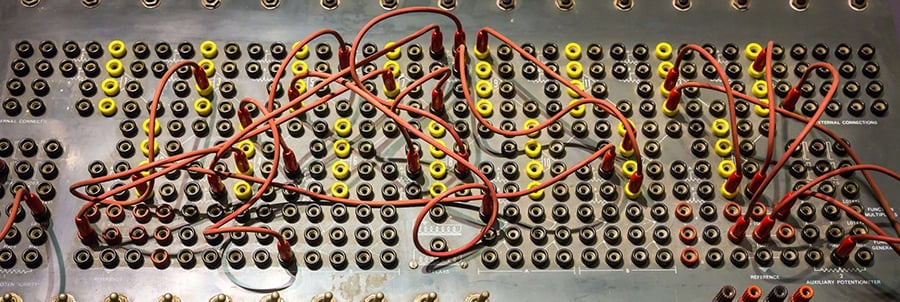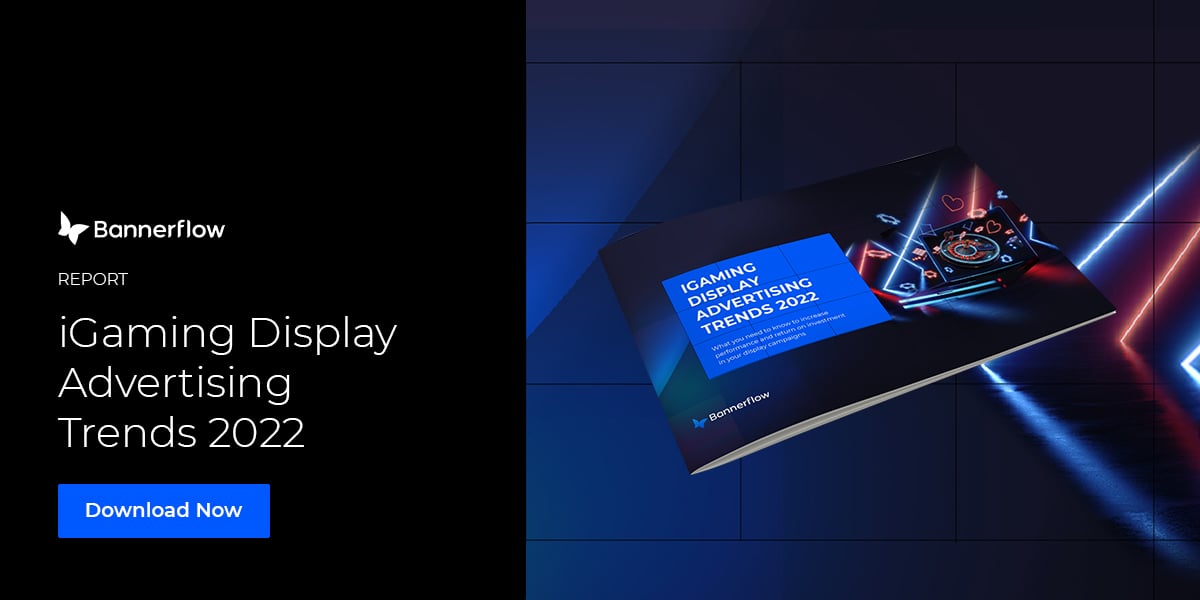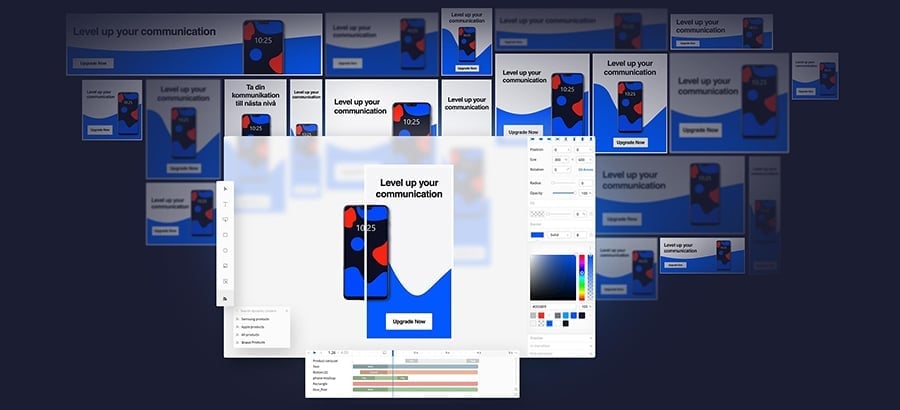
The future of display advertising: Martech webinar
The future of display advertising is efficient, creative, and personalised.
These are the key conclusions reached in Bannerflow’s recent webinar with Martech: The future of display advertising: New marketing strategies to boost results.
Click to enjoy the full webinar with Bannerflow Product Manager, Jared Lekkas, and Didit Co-founder and Chairman, Kevin Lee, or read the transcript below to get a taste of the strategies you can use to boost display advertising performance.

Today’s current digital advertising landscape
We are seeing a huge transition, more and more companies are moving part, or all of their advertising in-house. These changes to traditional workflows, are allowing in-house marketing teams with the right tools and competency – to move with more agility and control than ever before.
Plus, when we look at the role of technology in marketing and advertising today, a recent study found that technology was enabling 96% of senior marketers to take more operations in-house.
While, in the past year we have seen statistics show that display advertising has an 18% higher CTR with video than without – showing the importance of having access to the right technology.
Display advertising spend is still growing, and it remains a central part of many companies digital marketing strategy. However, as we can see from the above stats, some marketing teams are adopting more modern technologies – and the possibilities they enable – faster than others. Video is exploding, and dynamic creative technologies are becoming more available too.
Priorities of today’s CMO
According to a recent study by Emarketer, the number one priority for CMOs is efficiency. While, other focus areas such as: customer experience, brand awareness and global expansions ranked high – efficiency was the #1 priority for CMOs in the Americas and APAC region. It also ranked highly in Europe.
What’s more, the second highest priority for CMOs – and number one priority in Europe – is customer experience. This is a trend that we are seeing at Bannerflow too. Indeed, more and more of our sales and onboarding dialogues are focused on creative freedom. Companies need a platform where they can bring any idea to life, efficiently.
What this tells us, is that a creative management platform (CMP) designed to enable companies to work more efficiently and creatively within digital advertising, will have an important role to play in the future of digital advertising. Indeed, there are many best practices and strategies we can share in order to help advertisers globally.
Boost results with these 3 strategies:
1. Maximise efficiency
Let’s start by talking about our first strategy, which is looking at how you can maximise efficiency within your company’s digital marketing.
Audit your current workflow
The faster you can deliver from idea to publication, the more you can focus on creativity and performance. Therefore, step 1 is to audit your current workflow.
Does your efficiency suffer from some of the pains below?
We still see mind-blowing numbers of companies working with sub-optimal workflows. For example, the use of manual production workflows, repetitive designing, and endless email chains.
Creating multiple display advertising sizes should take minutes! While video or dynamic creative ads should also be just a click away. Yet, this doesn’t always seem to be the case.
How can you support greater efficiency?
Next, step two after your audit, is maximising your efficiency through technology. This requires finding the right tool to help you become more efficient by solving your production pains.
Nowadays there are many advertising technologies available, all catering for different markets, needs, and budgets. But one thing they all have in common is that they aim to help teams boost results.
Yet, how do you select the right ad tech for your team? We recommend you undertake the following tasks:
In particular, one big difference we notice across ad tech is usability. Some of the most advanced platforms on the market are simple to use, whereas some advertising giants use complex solutions that require years of experience.
Another question for many CMOs is how fast can you get up and running? For example, will you have dedicated support for faster onboarding. Here at Bannerflow we pride ourselves on enabling our customers to go live with their first campaigns after only a few days of becoming a customer. Digital natives or not.
2. Personalise your ad production
Next, even with a more efficient set up, your marketing team now needs to be able to deliver the right ads to the right users. Our second strategy focuses on personalisation and how you can tailor your ad production to your audiences.
Competency and complexity
Over the past few years, there has been a huge shift towards mass-personalisation. Advertisers are now striving to personalise their ads. However, they are now realising it’s difficult and takes time!
Shifting towards mass-personalisation means production lots of ad creatives, data feeds, more intense collaboration. Plus, you need to publish all of the material!
All of these things increase complexity in your marketing workflow, and trying to do this without an ad tech partner takes a lot of time and a great deal of internal competency.
Without an ad tech partner, your team needs to manage all of the above yourself. Therefore, your marketing team will need more data engineers, designers, production and project managers, translators, and media buyers, etc, in order for personalisation to work!
However, things are very different if you use an ad tech platform, such as a CMP. For example, we would recommend having one person on your team to manage the data feeds, as you will receive support from the platform itself.
You also don’t need to employ more designers, as a few designers can easily get everything done using a CMP. Plus, there is no increase in project management, as collaborative tasks are performed in-platform too. Lastly, you can publish display ads direct to your chosen ad network instantaneously, with no testing necessary.
Time
One of the biggest reasons marketing teams do not adopt personalisation is time.
By increasing in-house competency and partnering with the right ad tech, I promise you, time will no longer be a limiting factor. The only issue with time will be trying to find tasks to fill the new time you have gained!
Dynamic creative optimisation (DCO)
Next, any section on personalisation wouldn’t be complete without talking about one of today’s hottest buzzwords, dynamic creative optimisation, or as it is better known: DCO.
During a recent seminar, we asked some of Sweden’s largest advertisers if they have heard of DCO – most raised their hands. Then we asked, how many truly understood DCO – and all hands went down. Essentially, DCO is a tool to help create ad variations at enormous scale.
When looking into working with DCO marketing teams should be aware that it can save time but remember that getting started and maintaining a DCO campaign is more complex than a normal display campaign.
Therefore, as we see it, the dynamic creative, or DC in DCO, is something that marketers should focus on first. This means ad creatives with dynamic data. For example, ads that feature automatically updated prices, products or schedules, are all great ways of getting started.

4 tips to succeed with DCO
Here at Bannerflow, we are now seeing companies looking to adopt DCO, who have never worked with dynamic creatives before. While this is possible, there are many common mistakes that teams make when getting started.
Here are our tips to ensure DCO success:
- Firstly, learn what DCO is, and why it is relevant to your company. Take time to analyse your needs. From our experience, DCO is one of the answers to companies’ marketing pains.
- Stay creative! Too many companies use DCO simply as a time saver. They use the same generic design. This leads to ad fatigue, and irritation amongst customers – as well as, probable increased use of ad blockers.
- Make sure you have someone in-house who can manage your data. This ensures that the right message is going to the right target audience.
- Lastly, avoid so-called “blackboxing”! Opportunistic or greedy agencies are making DCO seem far more complex than it needs to. However, there are also agencies and DCO partners that want you to succeed. Our recommendation is to get involved in the process, understand the solution, and set reasonable expectations.
Basic Vs. Creative DCO
There is a big difference between basic DCO and creative DCO. To help understand this difference we have put together two examples that show a non-creative approach to personalisation and the best practice approach.
Basic DCO
In the example below, we can see what we call the basic approach to DCO. Firstly, this is a huge step up from a non-dynamic setup – using one ad for all target audiences. By using DCO you remove the need for the manual duplication of creatives and adjusting of copy as it is done automatically.
To make a basic DCO ad campaign, the creative is designed in our CMP, and connected to a data feed which generates multiple versions of the ads and populates each one with different content. However, the animations, design elements and layout of the creative remain the same for all ad variations in the display campaign.
Creative DCO
Our next example, is what we call Creative DCO, which as the name suggests offers greater creative freedom.
Using a CMP, a designer – in an hour, or so – can create at least 4 different designs, including animations, and connect them to a data feed.
Creative DCO offers a customised approach to showing relevant content to the right audience. For example, if we look closely at the example in the slide, this ad has been optimised for current users of a fake streaming service. What’s more, we can see that it uses an interactive HTML5 widget connected to feed source, which allows the user to toggle through video categories based on user preferences.
This form of DCO offers a great way to increase viewer engagement.
3. Your impactful advertising formula
Finally, our third strategy covers how to get the biggest impact from your digital advertising.
Without impact, why bother?
At the end of the day, what is marketing without impact? Nothing! Without impact, there really is no point.
For us, impact is the right message, at the right time, in front of the right user, shown with the best possible creative design for that user.
So, how you can ensure to get the biggest bang for your buck?
Unleash the power of the internet!
We have all become complacent towards the internet as an advertising channel. Yet, when it comes to advertising it is the most powerful piece in the puzzle. It is by far, the fastest, most flexible, most dynamic, most measurable, and most relevant advertising medium available.
The internet offers all of these opportunities:
Yet, some advertisers are still only unlocking a tiny bit of this power. For maximum impact, you need to incorporate all of the internet’s superpowers into your marketing strategy.
For example, being fast is not just about executing a campaign in record time. It’s about being able to react to world events in real-time, aka moment marketing. Or flexibility is fixing an embarrassing typo in seconds. While, dynamic capabilities, means the ability to put the right ad in front of the person.
Creativity means greater performance
Another huge factor in producing advertising impact is creativity.
There are many reasons why creativity drives performance in advertising, including:
In particular, creativity establishes emotions. Strong emotions in advertising can drive viewers to make an expensive purchase or donate money to a cause. And the goal of marketers everywhere is to tap into these emotions to drive a reaction, to ultimately lead to a conversion.
Creativity is also one of the most important pillars in marketing. Yet when time becomes an issue, it is almost always the first thing to be compromised. This needs to be reversed! Creativity should not be compromised, as creativity drives greater ad performance.
Creativity is free!
Lastly, it goes without saying, creativity is free.
However, generic ads will still need to be served. Therefore, your media spend using generic ads will cost just as much as serving dynamic or creative ads. Yet the latter, will provide a higher impact, higher engagement, and higher conversion rate.
And as we have mentioned creativity and production, no longer need to be bottlenecks when using the right advertising technology!
Key take-aways:
To summarise the biggest take-aways, these are the three main points we hope you can take away from this presentation:
Strive to maximise your efficiency. Whether it is by iterating internal processes, or using ad tech partners such as creative management platforms, all companies can improve their efficiency.
Personalisation is the way of the future. In today’s digital age we have unlimited possibilities, and now, using the right ad tech solutions you can utilise incredibly powerful tools to deliver the right message, to the right viewer, at the right time.
Design campaigns with impact. Even with using personalisation, all your work will be for nothing if your marketing lacks impact. Utilise what the internet has to offer: speed, flexibility, dynamic capabilities, measurability and relevance.
Without creativity, impact disappears! It’s not just how an ad looks, but the way it is delivered, the emotions it stirs, and the location it is shown. Combine creativity, with the power of data, by using a CMP to optimise and refine campaigns to achieve maximum impact.
If you would like to watch the full webinar, featuring Co-founder and Chairmen of Didit, Kevin Lee, simply click the button below and fill out your details to start viewing.

Share this article
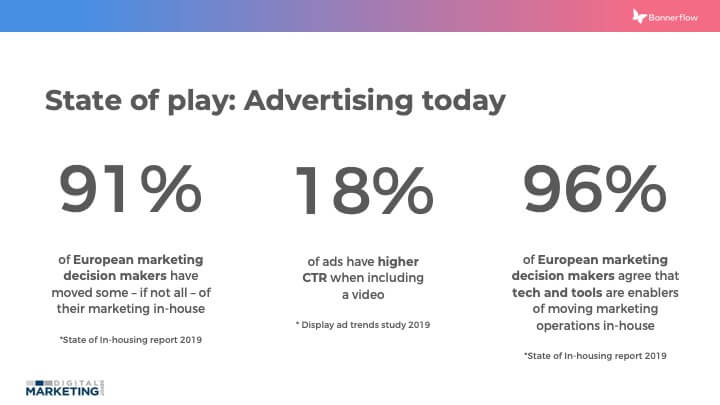
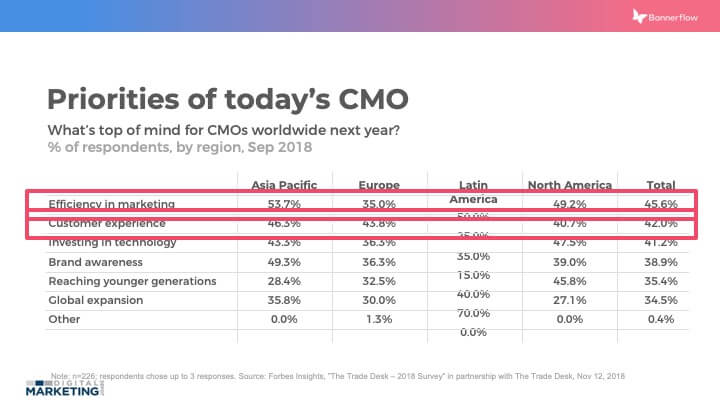
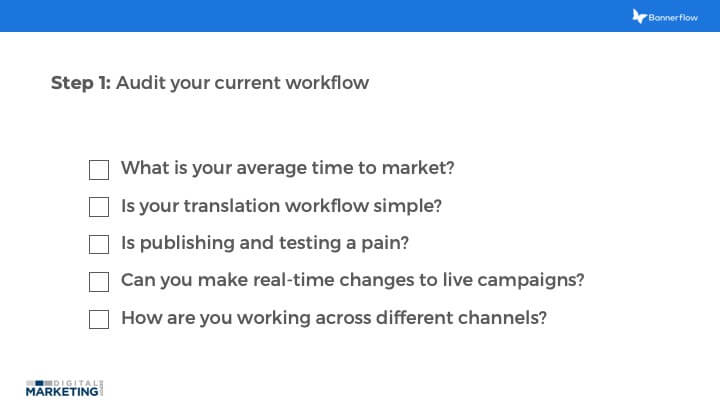
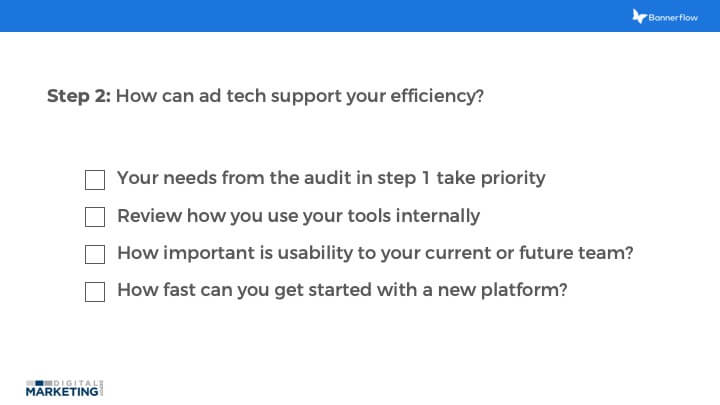
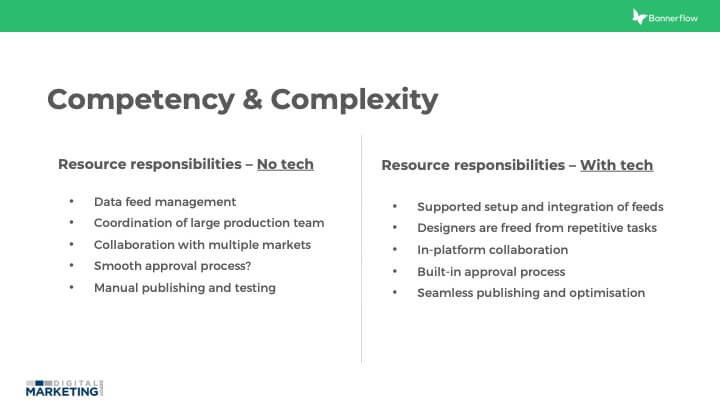
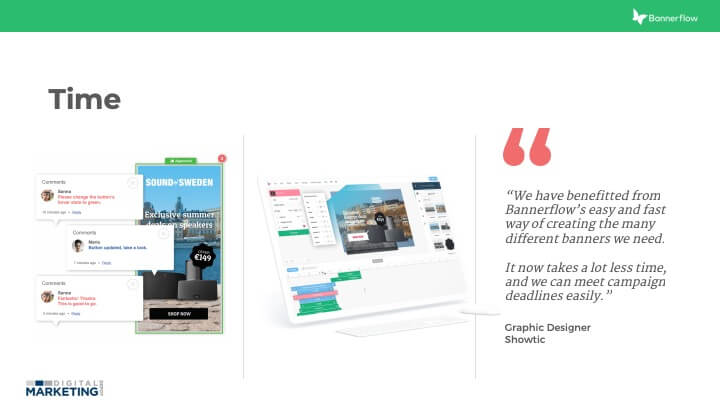
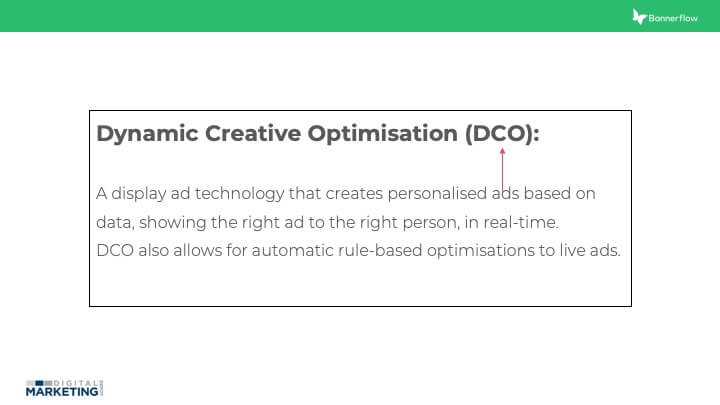
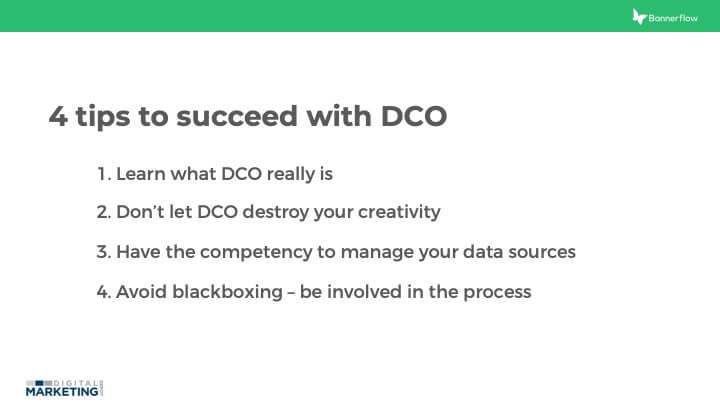
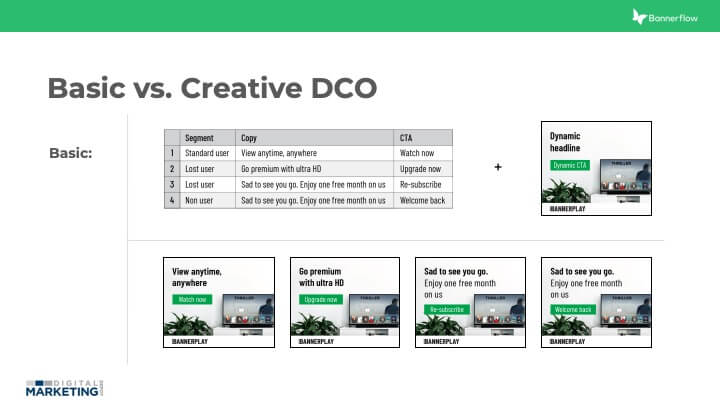
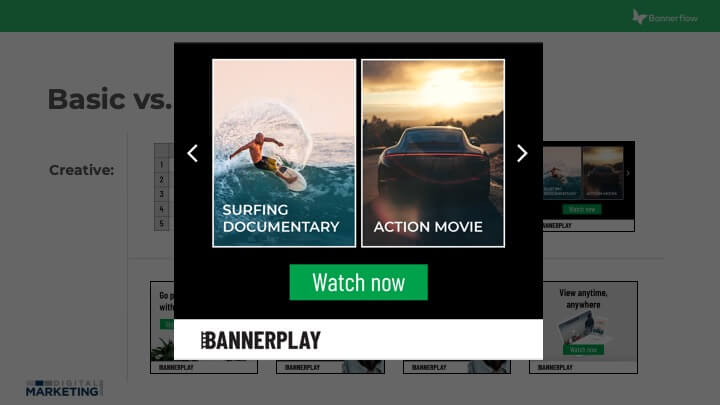
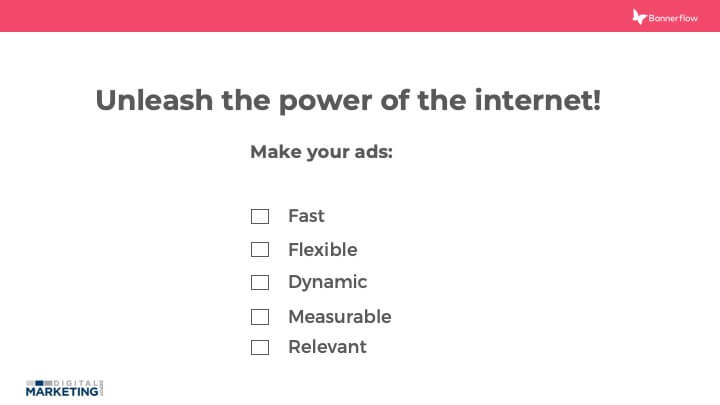
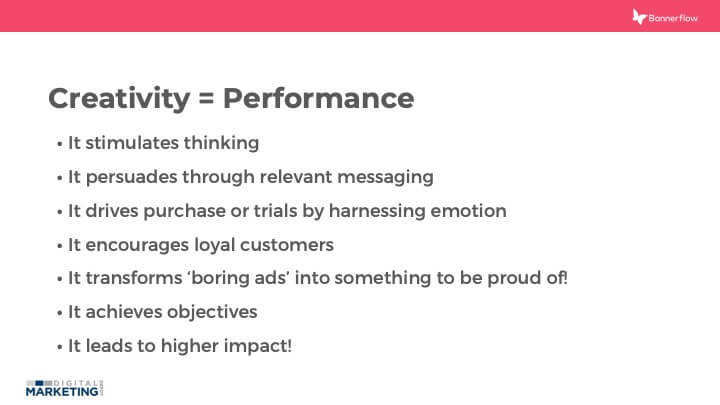
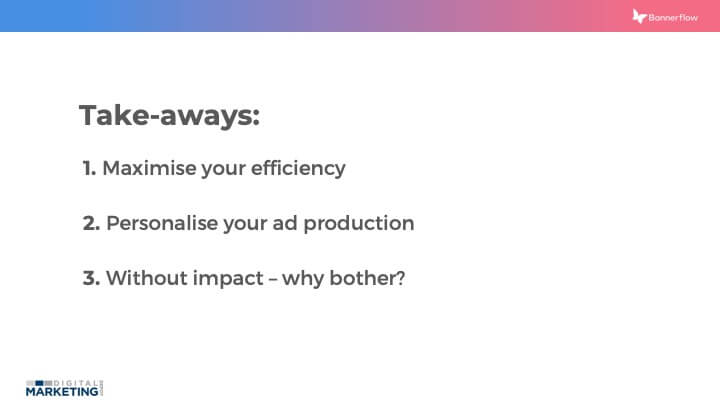
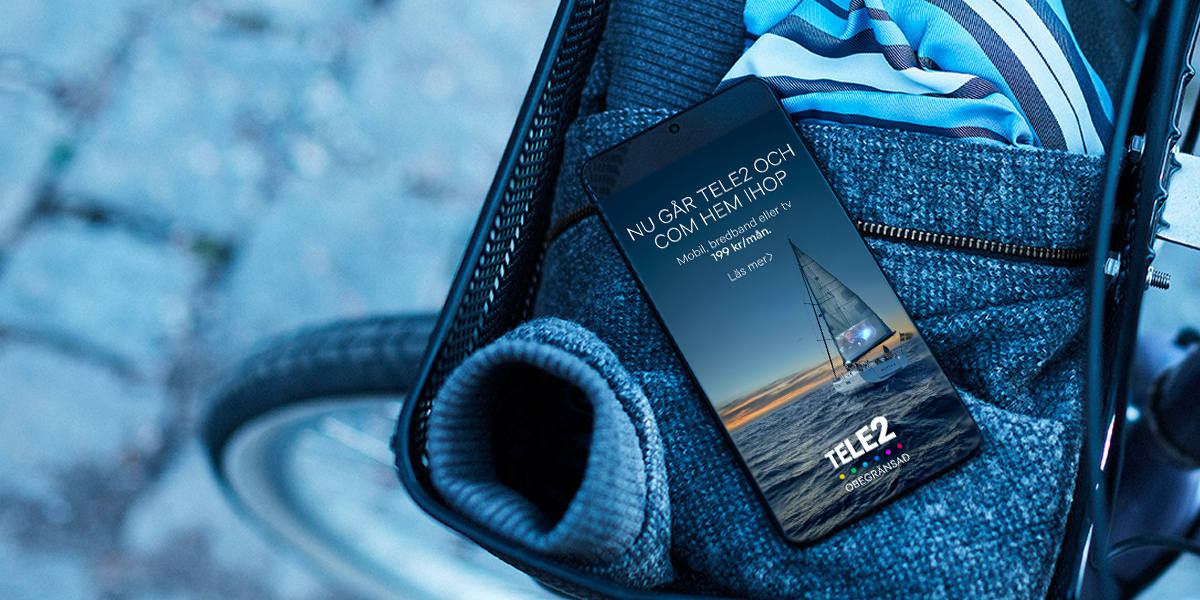

![Mobile Consumer Behavior [Infographic]](https://www.bannerflow.com/hubfs/Imported_Blog_Media/Mobile-Ads-Infographic-3.jpg)
